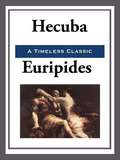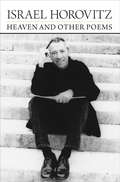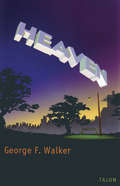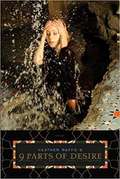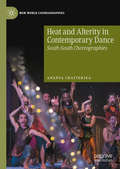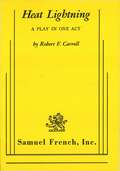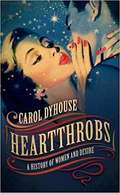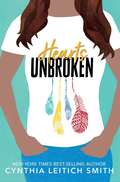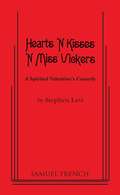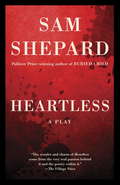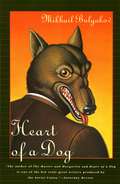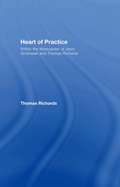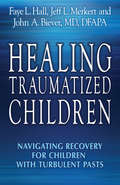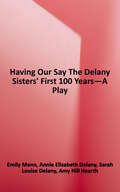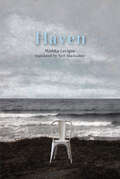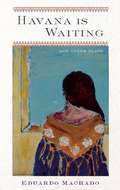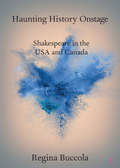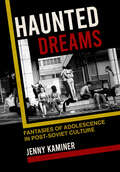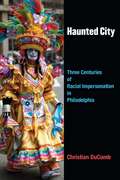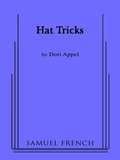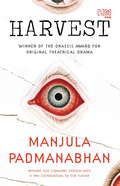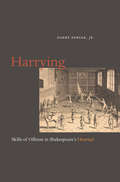- Table View
- List View
Hecuba
by EuripidesHecuba is a tragedy by Euripides written c. 424 BC. It takes place after the Trojan War, but before the Greeks have departed Troy (roughly the same time as The Trojan Women, another play by Euripides). The central figure is Hecuba, wife of King Priam, formerly Queen of the now-fallen city. It depicts Hecuba's grief over the death of her daughter Polyxena, and the revenge she takes for the murder of her youngest son Polydorus.
Heaven and Other Poems
by Israel HorovitzWith more than 70 produced plays and many produced screenplays, playwright/director/author Israel Horovitz presents a new dimension to his creative output in Heaven and Other Poems, the 75-year-old author's first-ever authorized poetry collection. A tour-de-force of emotion, empathy and deep, melancholic beauty, Heaven and Other Poems is a stunning collection of work crafted over a lifetime. From the epic poem "Stations of the Cross" with its startling, tenderly crafted images of familial love and loss, to the punchy and pointed aphorisms of the twin "Defining the French Novel" and "Defining the American Novel" Horovitz displays a remarkable range, and#151;throughout#151;a deep understanding of humanity. As the most-produced American playwright in French theatre history, many of his poems naturally are set in France, where Horovitz often directs French-language productions of his plays. The collection is filled with surprises and special gifts, such as the never-before-published translation of one of his poems by master playwright Samuel Beckett, from whom Horovitz found thematic and stylistic inspiration for his own work. A truly inspired poetry collection, which is, in turn, truly inspiring and fulfilling to its audience.
Heaven
by George F. WalkerFive instantly recognizable multicultural characters play out their coincidental relationships in a contemporary paradise-a park on the outskirts of a city. The pursuit of their personal goals, usually considered as good and worthwhile in our society, pits each of these characters irrevocably against each other, and good intentions are carried to their absurd extremes. Cast of 4 men, 2 women.
Heather Raffo's 9 Parts Of Desire: A Play
by Heather RaffoAs topical as today's newspaper headlines, these rich monologues bring to life nine distinct Iraqi women whose very different stories convey the complex and harrowing reality of being female in modern-day Iraq. Their monologues quickly become a series of overlapping conversations leading to a breakdown in communication as the chaos of Iraq intensifies. Layal is a sexy and impulsive painter favored by Saddam's regime, breezily bohemian one minute and defensive the next; another woman mourns the death of her family in a 1991 bunker, and another--a blond American of Iraqi descent--painfully recalls a telephone conversation with Baghdad relatives on the eve of the U. S. invasion. Other characters decry the savagery of Saddam Hussein in terrifying detail and express an ambivalent relief at the American presence; still others--like a Bedouin woman searching for love--transcend politics. The title comes from the teachings of the seventh-century imam Ali ibn Abu Talib: "God created sexual desire in ten parts; then he gave nine parts to women and one part to men." Heather Raffo's monologues weave these nine parts into a finely textured, brilliantly colorful tapestry of feminine longing in dire times. This compassionate and heart-breaking work will forever change your view of Iraqi women and the people of the Middle East.
Heat and Alterity in Contemporary Dance: South-South Choreographies (New World Choreographies)
by Ananya ChatterjeaThis book argues that contemporary dance, imagined to have a global belonging, is vitiated by euro-white constructions of risk and currency that remain at its core. Differently, the book reimagines contemporary dance along a “South-South” axis, as a poly-centric, justice-oriented, aesthetic-temporal category, with intersectional understandings of difference as a central organizing principle. Placing alterity and heat, generated via multiple pathways, at its center, it foregrounds the work of South-South artists, who push against constructions of “tradition” and white-centered aesthetic imperatives, to reinvent their choreographic toolkit and respond to urgent questions of their times. In recasting the grounds for a different “global stage,” the argument widens its scope to indicate how dance-making both indexes current contextual inequities and broader relations of social, economic, political, and cultural power, and inaugurates future dimensions of justice.
Heat Lightning
by Robert F. CarrollComedy / 2m, 1f / Interior / Out of a summer storm, a panic stricken girl rushes into a bus stop terminal on a deserted highway, and bolts the door behind her. Encountering a lone passenger waiting for the last bus, she gaps out her frightening experience of having just witnessed a murder and escaped from the maniac. Gradually, the man's insistent questioning about the murderer's identity leads the girl to realize he's the man. The realization is shattered when a flash of lightning reveals another man's face at the door. The second man is admitted. Now the girl has her back to the wall, not knowing who is to be trusted and who is to be feared. Her decision is the climax of the play.
Heartthrobs: A History of Women and Desire
by Carol DyhouseFrom dreams of Prince Charming or dashing military heroes, to the lure of dark strangers and vampire lovers; from rock stars and rebels to soulmates, dependable family types, or simply good companions, female fantasies about men tell us a great deal about the history of women. In Heartthrobs, Carol Dyhouse draws upon literature, cinema, and popular romance to show how the changing cultural and economic position of women has shaped their dreams about men. <p><p> When girls were supposed to be shrinking violets, passionate females risked being seen as 'unbridled', or dangerously out of control. Change came slowly, and young women remained trapped in a double-bind: you may have needed a husband in order to survive, but you had to avoid looking like a gold-digger. Show attraction too openly and you might be judged 'fast' and undesirable. Education and wage-earning brought independence and a widening of horizons for women. <p><p> These new economic beings showed a sustained appetite for novel-reading, cinema-going, and the dancehall. They sighed over Rudolph Valentino's screen performances as tango-dancer or Arab tribesman and desert lover. Women may have been ridiculed for these obsessions, but, as consumers, they had new clout. This book reveals changing patterns of desire, and looks at men through the eyes of women.
Hearts Unbroken
by Cynthia Leitich SmithWhen Louise Wolfe’s first real boyfriend mocks and disrespects Native people in front of her, she breaks things off and dumps him over e-mail. It’s her senior year, anyway, and she’d rather spend her time with her family and friends and working on the school newspaper. The editors pair her up with Joey Kairouz, the ambitious new photojournalist, and in no time the paper’s staff find themselves with a major story to cover: the school musical director’s inclusive approach to casting The Wizard of Oz has been provoking backlash in their mostly white, middle-class Kansas town. From the newly formed Parents Against Revisionist Theater to anonymous threats, long-held prejudices are being laid bare and hostilities are spreading against teachers, parents, and students — especially the cast members at the center of the controversy, including Lou’s little brother, who’s playing the Tin Man. As tensions mount at school, so does a romance between Lou and Joey — but as she’s learned, “dating while Native” can be difficult. In trying to protect her own heart, will Lou break Joey’s?
Hearts 'N Kisses 'N Miss Vickers
by Stephen LeviComedy / 11m, 6f / A side splitting addition to the ever popular Miss Vickers adventures, this outing finds five present day, time traveling teens trapped in 1921 on Valentine's Day. A lovesick old maid ghost of a schoolteacher, Miss Vickers, contrives to have Cupid unite her younger, live self with the man of her dreams. With his arrows flying recklessly about at mismatched couples, the teens have their hands full unscrambling the chaos and avoiding the jaws of death. This is madcap merriment on a grand scale, a modern Midsummer's Night Dream that is exciting fun for the whole family. "The writing is gorgeous. I commend you for using your extraordinary talents to benefit young people.... Thanks for making a retired English teacher feel she has died and gone to heaven." Joan Everhart. (Also see Good Morning Miss Vickers and Merry Christmas Miss Vickers.)
Heartless
by Sam ShepardWhen Roscoe, a 65-year-old Cervantes scholar, runs off with a young woman named Sally, he decides to stay a while in her family home. Soon he discovers that Sally's house--once inhabited by James Dean; perched precariously over the San Fernando valley--is filled with secrets, sadness, and haunted women who cannot leave themselves or anyone else in peace. From Lucy, Sally's suspicious sister, to Mable, their Shakespeare-quoting invalid mother, to Elizabeth, Mable's lovely and mysteriously mute nurse, the forces of the house conspire to make Roscoe question his assumptions about everything. As scars and histories are revealed, Shepard shows, as only he can, what happens when the secrets simmering within a family boil over. Heartless masterfully explores the irrevocability of our pasts--and the possibility of life begun anew.
Heart of a Dog
by Mirra Ginsburg Mikhail Afanasevich BulgakovThis hilarious, brilliantly inventive novel by the author of The Master and Margarita tells the story of a scroungy Moscow mongrel named Sharik. Thanks to the skills of a renowned Soviet scientist and the transplanted pituitary gland and testes of a petty criminal, Sharik is transformed into a lecherous, vulgar man who spouts Engels and inevitably finds his niche in the bureaucracy as the government official in charge of purging the city of cats.
Heart of Practice: Within the Workcenter of Jerzy Grotowski and Thomas Richards
by Thomas RichardsHeart of Practice is a unique and invaluable insight into the workings of one of theatre’s true pioneers, presented by his closest collaborator. This book charts the development of Grotowski’s dramatic research through a decade of conversations with his apprentice, Thomas Richards. Tuscany’s ‘Workcenter of Jerzy Grotowski and Thomas Richards’ is the enduring legacy of a master teacher, director and theorist, and home to much of Grotowski’s most significant work. Interviewed by leading scholars, and offering his own intimate accounts, Richards gives a vivid and detailed view of the Workcenter’s evolution, providing: concrete illustration of the Workcenter’s distinctive creative practices rigorous discussion of over twenty years of world-renowned research previously unpublished performance photos privileged insight into what Grotowski considered to be the culmination of his life’s work.
Healing Traumatized Children: Navigating Recovery For Children Who Experience Tragedy
by Faye L. Hall Jeff L. Merkert John A. BieverBecause millions of children experience early trauma and attachment disruptions, whether through death, physical or sexual abuse, domestic, community, or school violence, terrorism or other tragic losses, parents and professionals need not just vague theories but a proactive plan for healing relationship avoidant children. Healing Traumatized Children authors Hall, Merkert and Biever have successfully merged mental health, trauma, and attachment, parenting and in-home treatment strategies into a single comprehensive resource for parents and professionals. The authors emphasize the importance of an in-home plan (where the healing must begin), outline how to effectively assemble a support network, provide the keys to the establishment of a therapeutic home environment, discuss psycho-education that identifies the six distinct Trauma Disrupted Competencies and provide multiple types of healing interventions. Healing Traumatized Children confirms that without effective in-home intervention, many of these children will become involved in juvenile and adult justice systems and continue the intergenerational transmission of maladaptive relationships, abuse, and neglect. It is important to remember that these children will eventually become tomorrow’s parents.
He's All Man: Learning Masculinity, Gayness, and Love from American Movies
by John M. Clum"He's All Man" is John M. Clum's insightful, biting and characteristically humorous analysis of the central myths of American manhood that have been propagated by Hollywood films and dramatized by our major playwrights. In the politically incorrect way he dared to ask "What happened to gay irony?" in Something for the Boys , Clum now dares to ask the explosive question "What is the vision of the American Male that Hollywood has sold us?" He's All Man examines the ways in which homoeroticism has been part of the myth of American manhood, wrapping itself around cowboy, soldier, and gangster legends as they fuse to create a picture of the quintessential American male. <p><p>From Audie Murphy to The Sands of Iwo Jima and The Maltese Falcon , Clum takes us on a tour of the roughs, the toughs, and the fluffs that swagger, strut, and pirouette their way through the Hollywood Masculinity Machine and the ways in which gay filmmakers have bought into the Hollywood vision of manhood and romance. Just as Something for the Boys raised hackles and caused controversy over Lorenz Hart's lyrics and Ethel Merman's lungs, He's All Man will surely do the same for Edward G. Robinson's cigar and Marlon Brando's t-shirt.
Having Our Say: The Delany Sisters' First 100 Years
by Emily Mann Sarah Louise Delany Annie Elizabeth DelanyTHE STORY: HAVING OUR SAY opens as 103-year-old Sadie Delany and 101-year-old Bessie Delany welcome us into their Mount Vernon, New York, home. As they prepare a celebratory dinner in remembrance of their father's birthday, they take us on a remark
Haven
by Mishka LavigneHavre won the 2019 Governor General’s Literary Award for Drama (French).The play has also been translated into German and Spanish.First produced in French by La Troupe du Jour, Saskatoon, in 2018First produced in English by United Players of Vancouver in January 2022
Havana is Waiting and Other Plays
by Eduardo Machado"The existential pain of exile, the confusions of sexual identity and the complex legacies of the Cuban revolution are predominant [in] Mr. Machado's writing," -The New York TimesEduardo Machado explores his lifelong themes with humor and passion in Havana Is Waiting (a writer returns to Cuba after thirty years), Kissing Fidel (a comedy set in Miami funeral parlor), The Cook (chronicling Cuban history), and Crocodile Eyes (inspired by Federico García Lorca).Eduardo Machado is the author of more than forty plays. Born in Cuba, his plays have been widely performed. He is artistic director of INTAR Theatre and head of playwriting at New York University.
Haunting History Onstage: Shakespeare in the USA and Canada (Elements in Shakespeare Performance)
by Regina BuccolaIn 2016, Chicago Shakespeare Theater and the Stratford Festival of Canada mounted marathons through Shakespearean history to commemorate the 400th anniversary of the death of Shakespeare with Tug of War and Breath of Kings. Both productions invited parallels to contemporary political events in their promotion and design, just as the original performances of these works in the Shakespearean era used past events to comment on present realities. Endurathons for cast and audience alike, Tug of War and Breath of Kings used double-casting, stylized treatments of violence and 'firsts' for each company to sweeten the bitter pill of these historical narratives.
Haunted Dreams: Fantasies of Adolescence in Post-Soviet Culture (NIU Series in Slavic, East European, and Eurasian Studies)
by Jenny KaminerHaunted Dreams is the first comprehensive study in English devoted to cultural representations of adolescence in Russia since the end of the Soviet Union in 1991. Jenny Kaminer situates these cultural representations within the broader context of European and Anglo-American scholarship on adolescence and youth, and she explores how Russian writers, dramatists, and filmmakers have repeatedly turned to the adolescent protagonist in exploring the myriad fissures running through post-Soviet society. Through close analysis of prose, drama, television, and film, this book maps how the adolescent hero has become a locus for multiple anxieties throughout the tumultuous years since the end of the Soviet experiment. Kaminer also directly addresses some of the pivotal questions facing scholars of post-Soviet Russia: Have Soviet cultural models been transcended? Or do they continue to dominate? The figure of the adolescent, an especially potent and enduring source of cultural mythology throughout the Soviet years, provides provocative material for exploring these questions. In Haunted Dreams, Kaminer employs a historical approach to reveal how fantasies of adolescence have mutated and remained constant across the Soviet/post-Soviet divide, focusing on violence, temporality, and gender and the body. Some of the works discussed present the possibility of salvaging the model of the heroic adolescent for a new society. Others, by contrast, relegate this figure to the dustbin of history by evoking disgust or horror, or by unmasking the tragic consequences that ensue from the combination of adolescence, violence, and fantasy.
Haunted City: Three Centuries of Racial Impersonation in Philadelphia
by Christian DucombHaunted City explores the history of racial impersonation in Philadelphia from the late eighteenth century through the present day. The book focuses on select historical moments, such as the advent of the minstrel show and the ban on blackface makeup in the Philadelphia Mummers Parade, when local performances of racial impersonation inflected regional, national, transnational, and global formations of race. Mummers have long worn blackface makeup during winter holiday celebrations in Europe and North America; in Philadelphia, mummers’ blackface persisted from the colonial period well into the twentieth century. The first annual Mummers Parade, a publicly sanctioned procession from the working-class neighborhoods of South Philadelphia to the city center, occurred in 1901. Despite a ban on blackface in the Mummers Parade after civil rights protests in 1963–64, other forms of racial and ethnic impersonation in the parade have continued to flourish unchecked. Haunted City combines detailed historical research with the author’s own experiences performing in the Mummers Parade to create a lively and richly illustrated narrative. Through its interdisciplinary approach, Haunted City addresses not only theater history and performance studies but also folklore, American studies, critical race theory, and art history. It also offers a fresh take on the historiography of the antebellum minstrel show.
Hat Tricks
by Dori AppelDramatic Comedy / Flexible casting, 3-12 f / Unit Set / 2008 Finalist for the Oregon Book Awards, Angus Bowmer Award in Drama / Hat Tricks is an exciting compilation of six scenes and three monologues designed for performance by mature actresses. Covering a range of women's experiences in the second half of life, these nine pieces range from the purely comedic to those that combine humor with thoughtful and sometimes poignant explorations. This is a richly varied collection featuring a single intriguing commonality: Every scene or monologue includes the presence and compelling use of a HAT!
Hassan: The Story of Hassan of Baghdad and How He Came to Make the Golden Journey to Samarkand
by James Elroy FleckerNone.
Harvest
by Manjula Padmanabhan`A modern morality play. A bitter, savagely funny vision of the cannibalistic future that awaits the human race...? ? OUTLOOK A searing portrayal of a society bereft of moral and spiritual anchors, Manjula Padmanabhan?s fifth play, Harvest, won the Onassis Award for Original Theatrical Drama in 1997, the first year in which the prize was awarded. Following its international premiere in Greece in 1999, the play has been performed over the years by theatre groups, both amateur and professional, around the world. A dark satire, Harvest tells the story of an impoverished family and the Faustian contract they enter into with a shadowy international corporation: fabulous wealth in exchange for the organs of one of its members. As Ginni, the glamorous American woman who hopes to receive the organs, invades their one-room home via an interactive video device the play lays bare the transactional nature of human relationships ? even the most intimate ones. This edition includes, for the first time, a gender-reversed version of the play ? an experiment by the author that provides startling insight into the stereotypes and societal constructs ingrained deep in the human psyche and, indeed, into how we perceive gender.
Harrying: Skills of Offense in Shakespeare's Henriad
by Harry BergerHarrying considers Richard III and the four plays of Shakespeare’s Henriad—Richard II, Henry IV Part 1, Henry IV Part 2, and Henry V. Berger combines close reading with cultural analysis to show how the language characters speak always says more than the speakers mean to say. Shakespeare’s speakers try to say one thing. Their language says other things that often question the speakers’ motives or intentions. Harrying explores the effect of this linguistic mischief on the representation of all the Henriad’s major figures.It centers attention on the portrayal of Falstaff and on the bad faith that darkens the language and performance of Harry, the Prince of Wales who becomes King Henry V.
